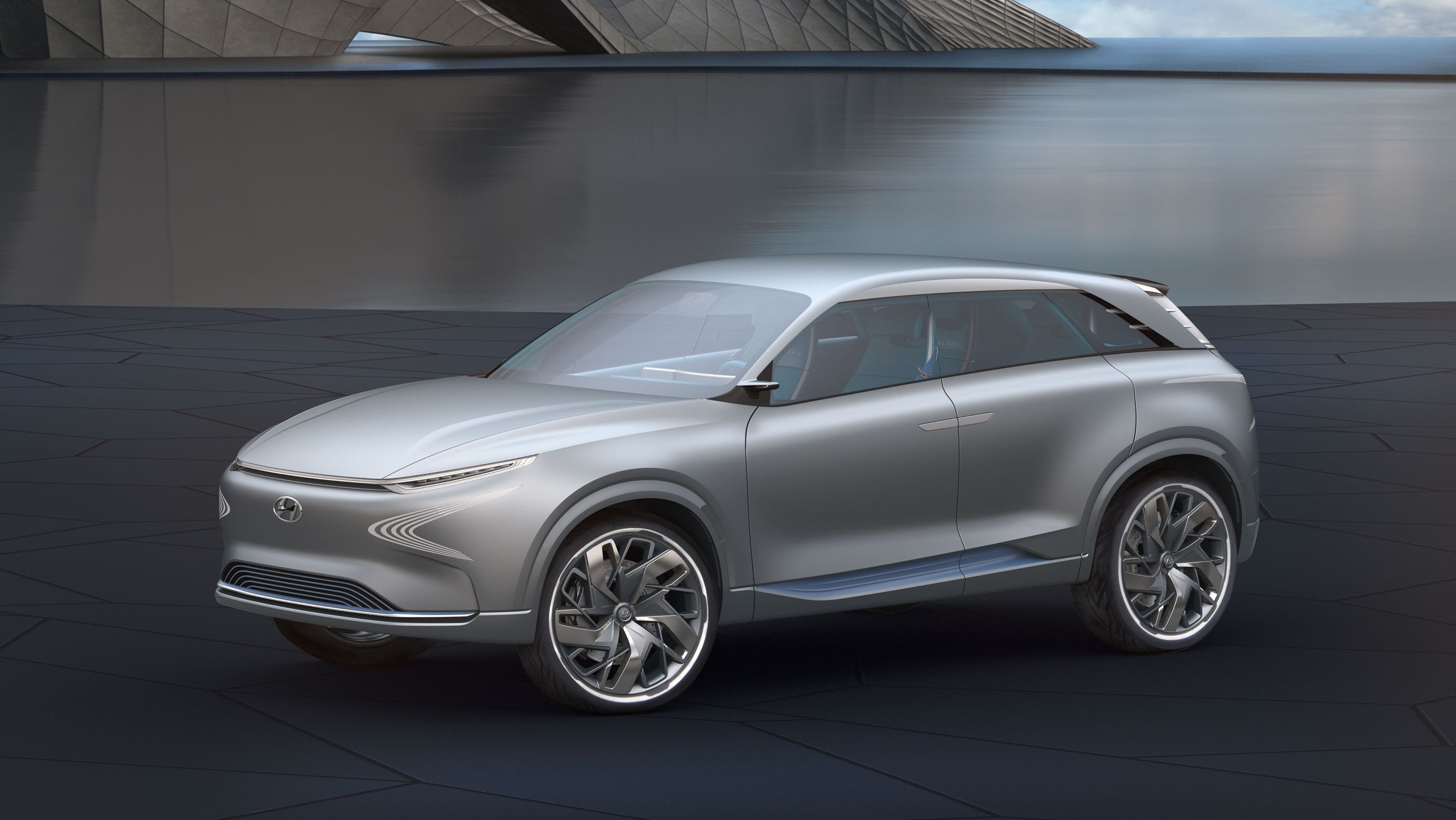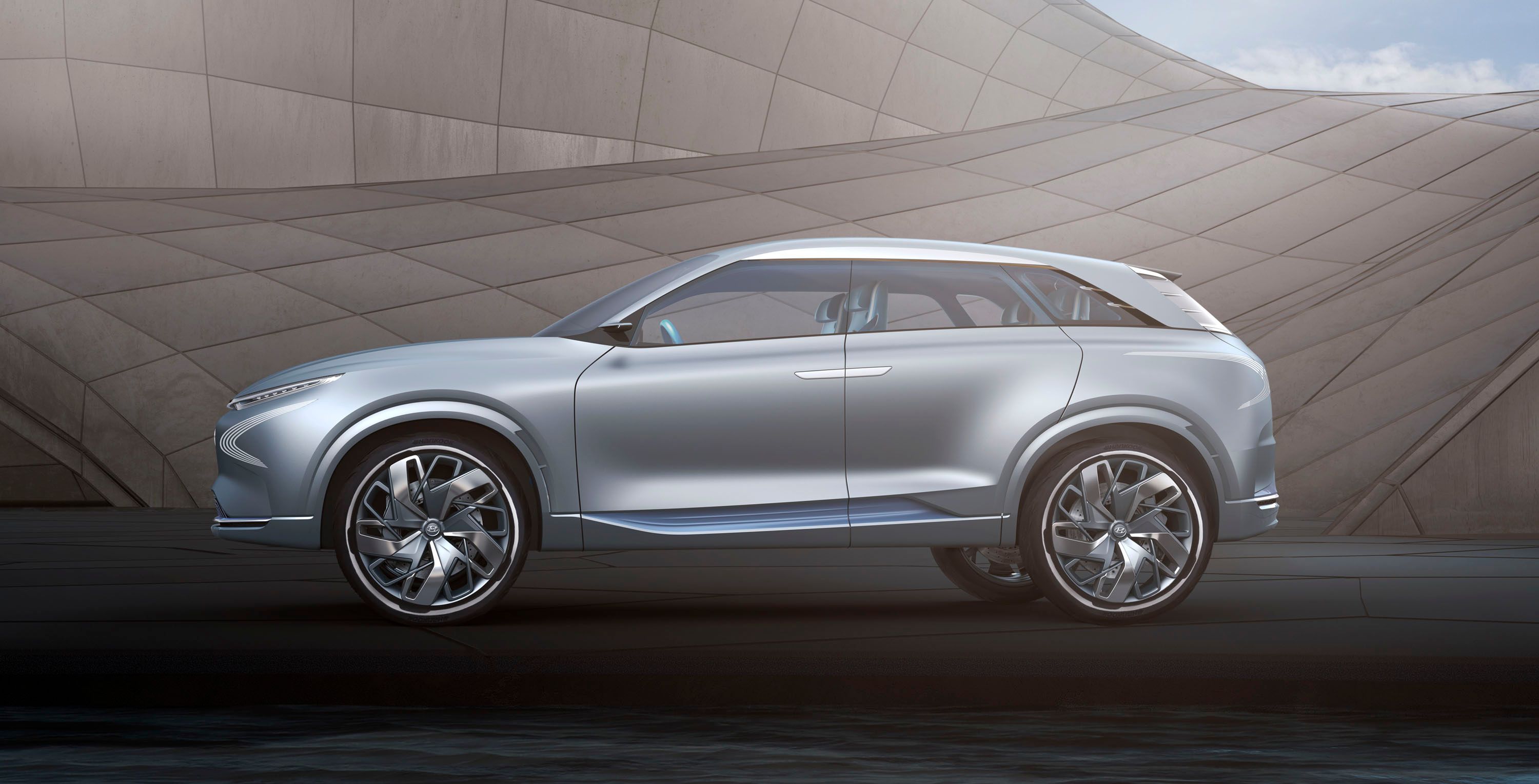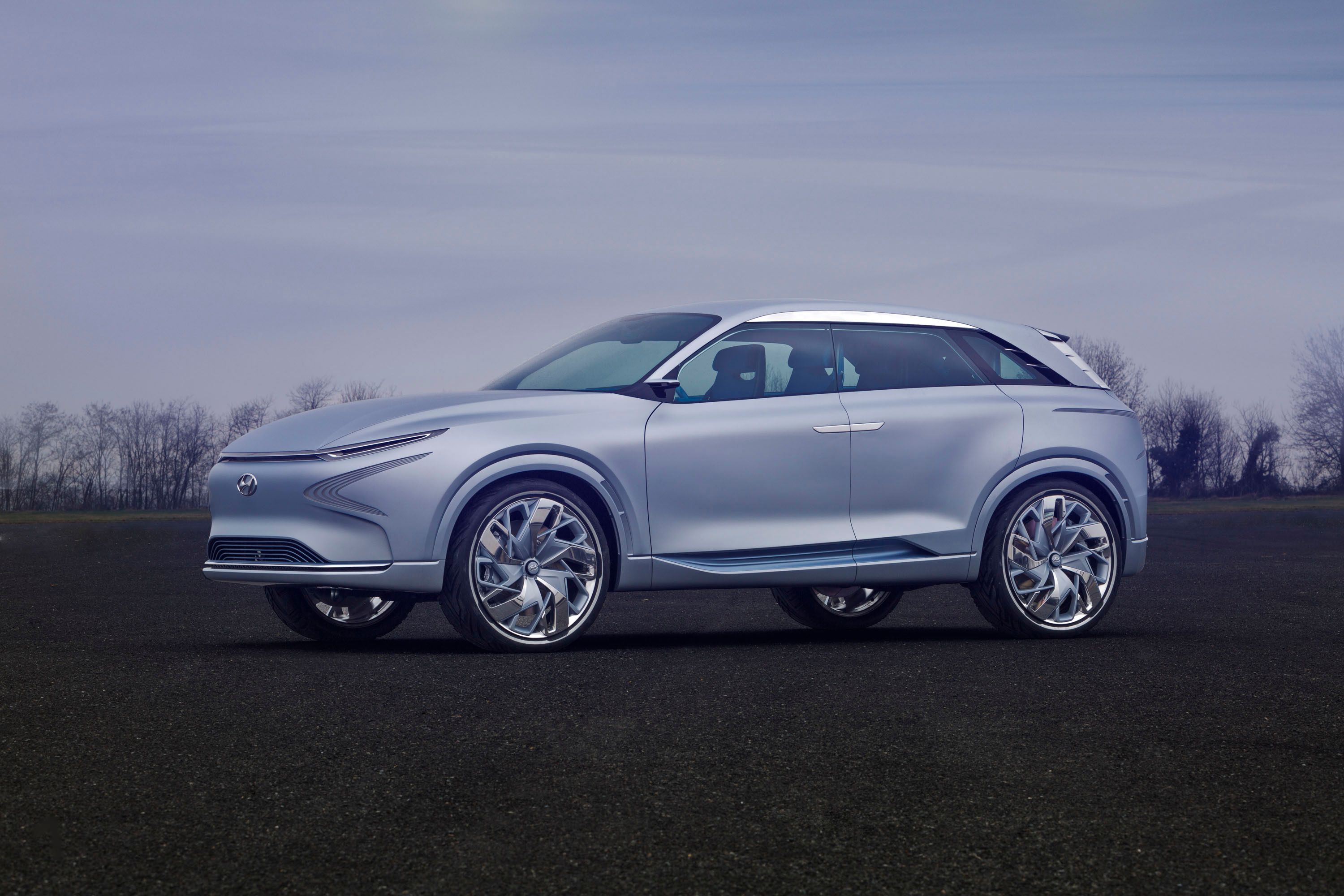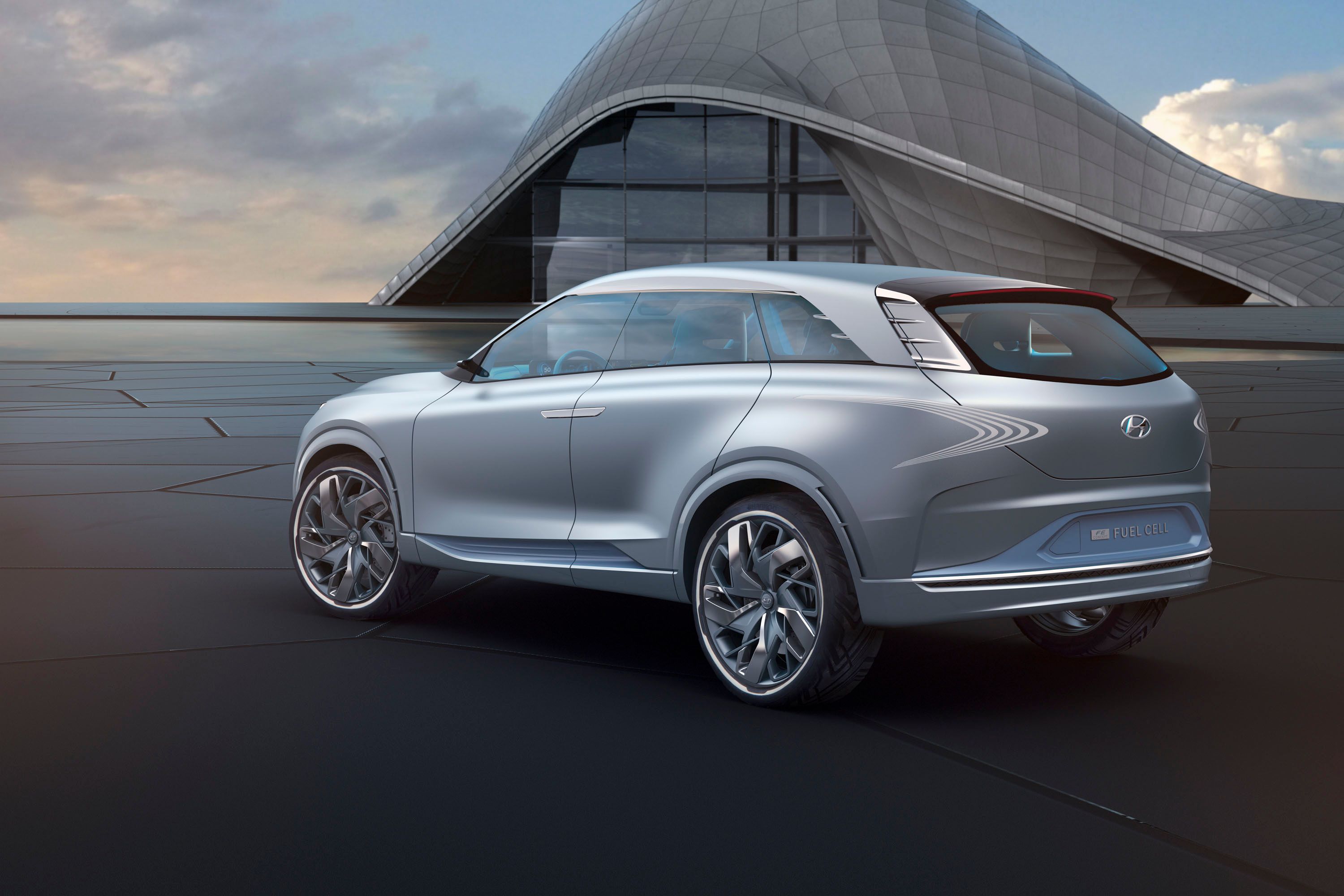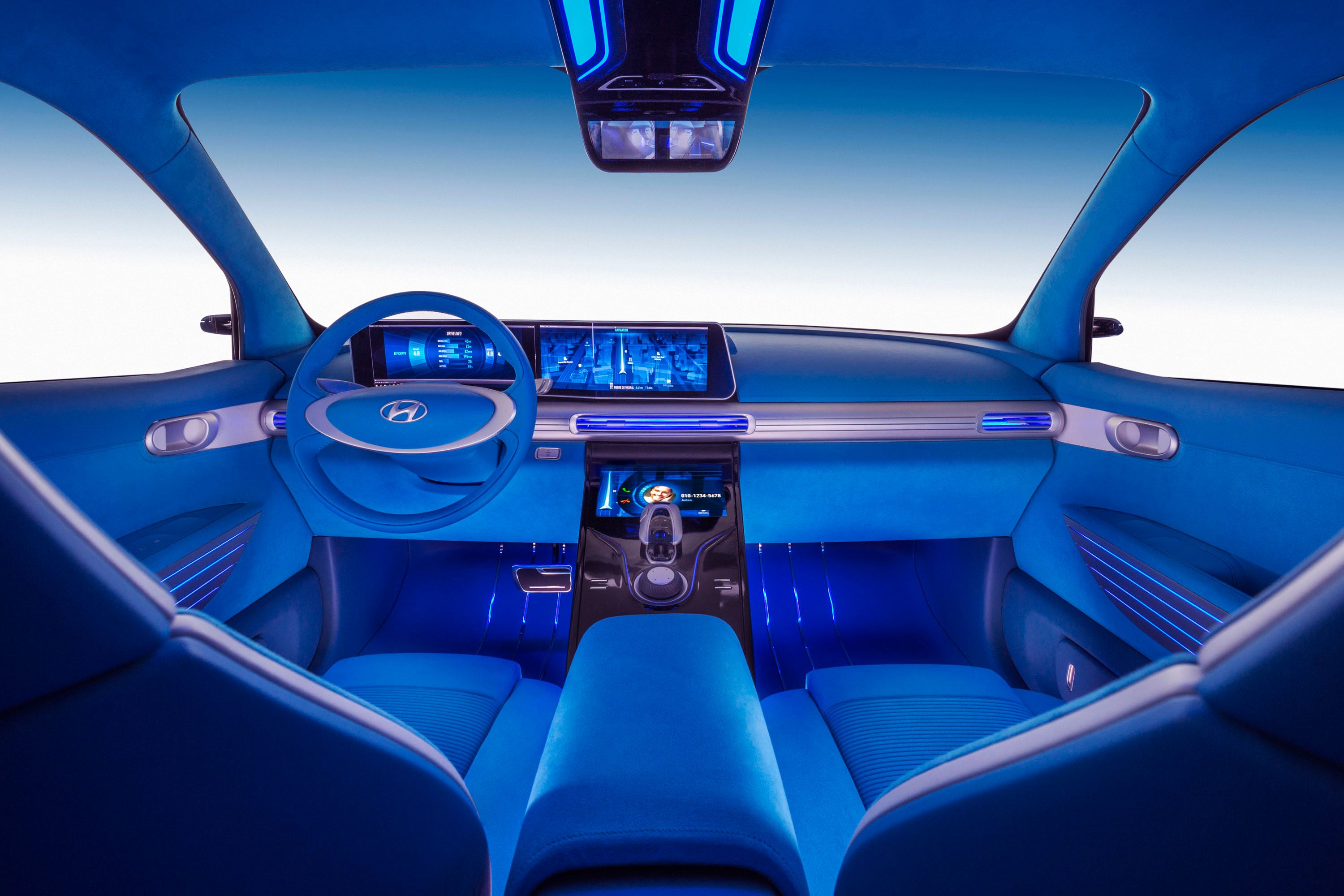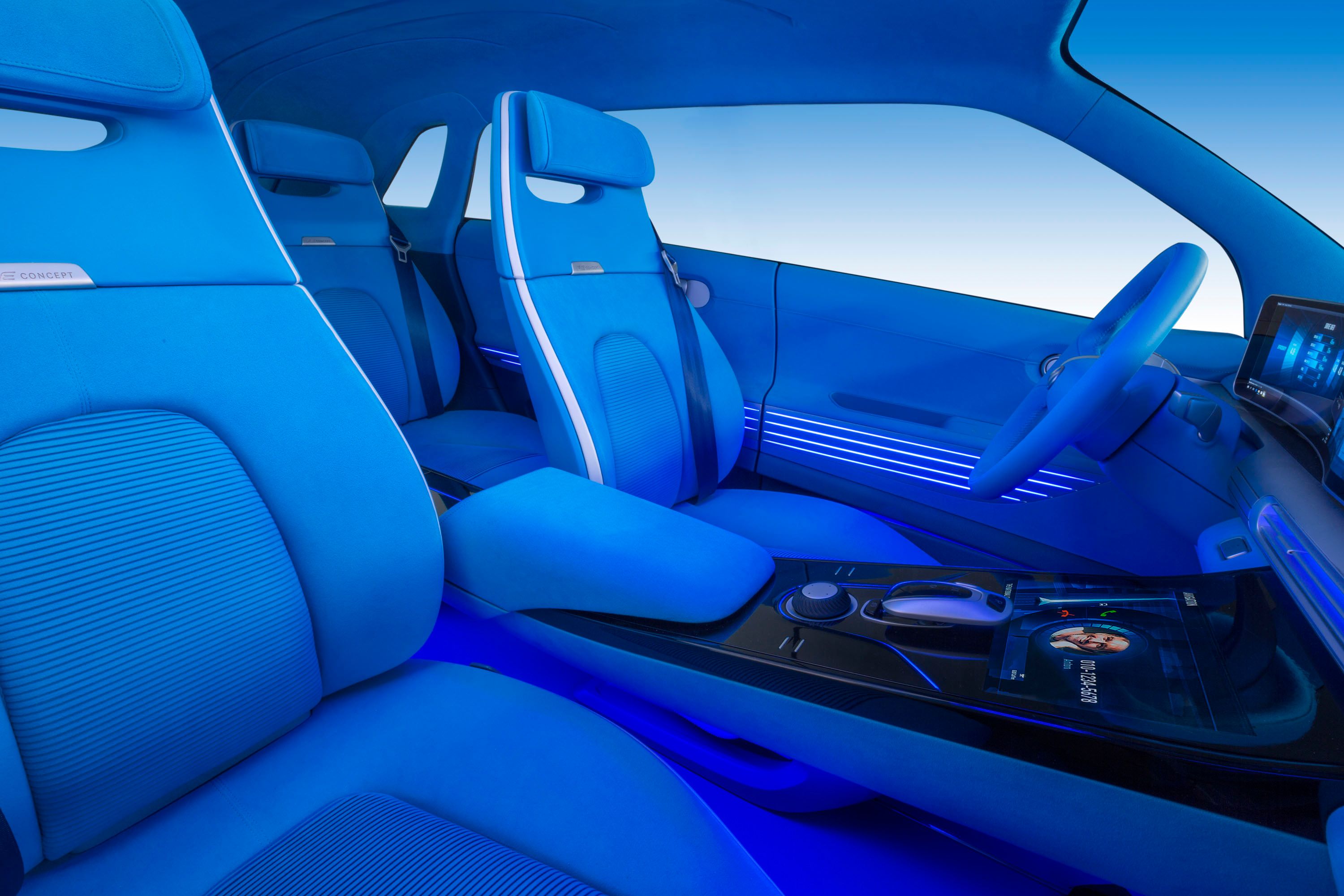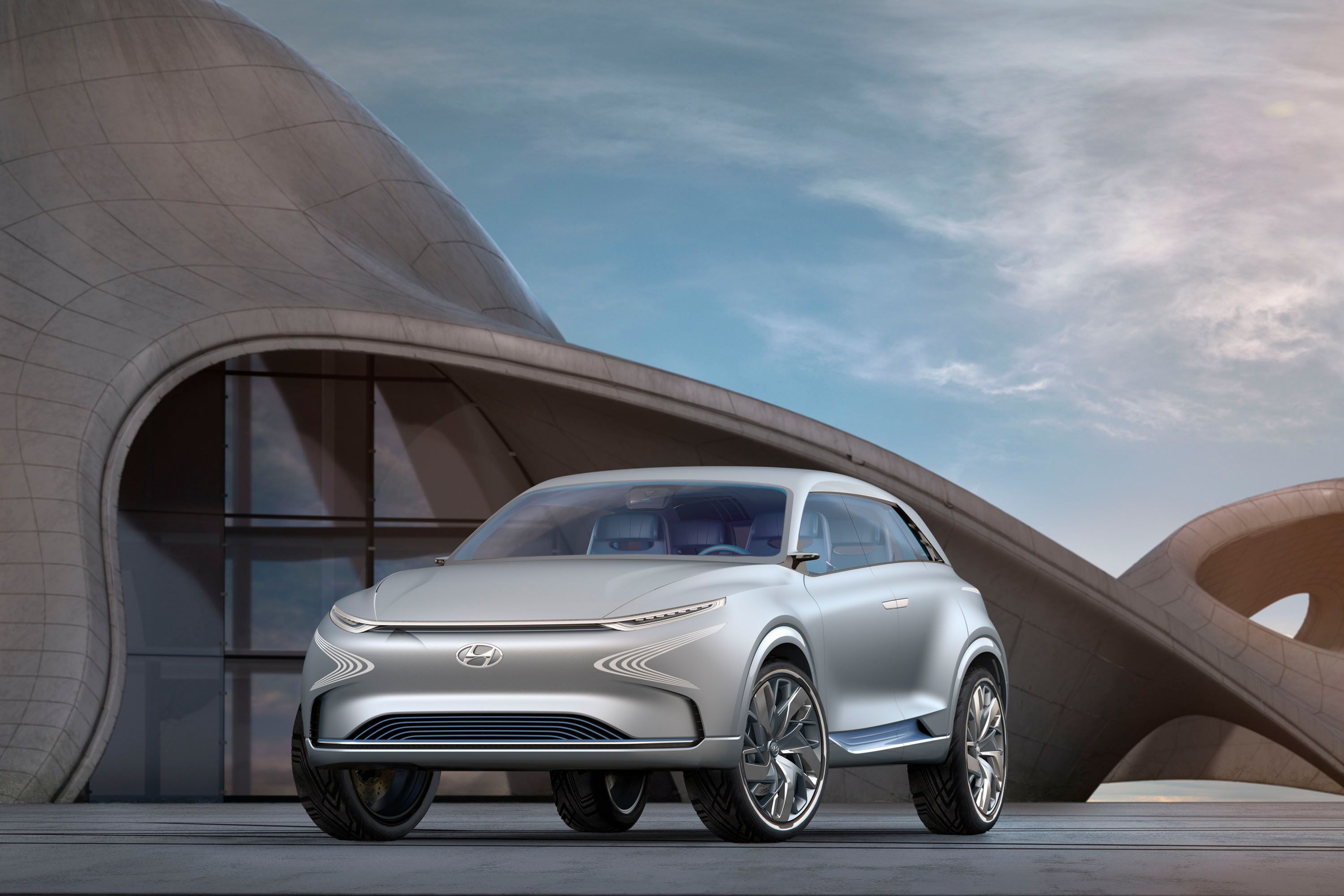Hyundai has been busy with a lot of projects recently, including the launch of its Genesis luxury brand, the Prius-fighting Ioniq, and hydrogen-powered vehicles. The latter returns under the spotlight with FE Fuel Cell concept, which the Korean brand has just unveiled at the 2017 Geneva Motor Show.
Part of a program that will see "14 or more new environmentally-focused" models introduced by 2020, the FE, which stands for "future eco," previews the company's next-generation of hydrogen-powered vehicles. A somewhat futuristic looking crossover by design, the FE Fuel Cell has a rather minimalist style with flowing design lines inspired by nature and water. There aren't a whole lot of details to run by, but the concept's styling is unlike anything else from Hyundai, and it could also preview an upcoming design language.
The cabin is rather simple and clean and centered around three distinct screens. There a wide display in place of the instrument cluster, an equally wide but taller screen atop the dashboard, and a smaller display in the center stack, just above what appears to be a gear selector. Apart from that and the blue ambient lighting, nothing stands out really, but Hyundai did say that the concept has an internal air humidifier. The system recycles water emitted by the car’s clean hydrogen energy circulation to create "a more comfortable cabin environment."
But what about power and range?
Continue reading for the full story.
Next-Generation Fuel Cell
Moving over to the drivetrain department, the FE Fuel Cell is powered by the company's fourth-generation fuel cell technology. Compared with the current system used in the Tucson ix35 Fuel Cell, it is 20 percent lighter and achieves 10 percent greater efficiency. In addition, the power density of the fuel cell stack has increased by 30 percent, enhancing the car’s range. Speaking of range, Hyundai predicts that the FE Fuel Cell will run for more than 800 km on a single hydrogen tank. That's pretty impressive and rather necessary given the currently limited hydrogen infrastructure.
Another interesting thing about the FE concept is that it was designed to have portable battery packs, which are charged by the car's energy output so that passengers could use various devices, including smartphones and tablets. Additionally, the trunk contains a small electric scooter for enhanced mobility in crowded cities.
Hyundai says that the FE concept will inspire a production SUV that will be launched in 2018. It remains to be seen whether it's a new nameplate or the next-generation ix35/Tucson.
Why it Matters
Hyundai might be too small to battle with the large companies in most segments, but it's arguably the most important player when it comes to hydrogen-powered vehicles. The Korean brand has invested heavily in fuel cells, to the point that it has become a global leader in hydrogen transportation. Granted, the technology is still in its infancy and the infrastructure is almost non-existent, but Hyundai managed to deliver the world's first mass-produced hydrogen vehicle, the ix35/Tucson Fuel Cell, in 2013. Four years later and the crossover is on sale in 17 countries around the world. That's a big achievement given the lack of technology and infrastructure and the massive amount of funding needed for research and development in this field.

